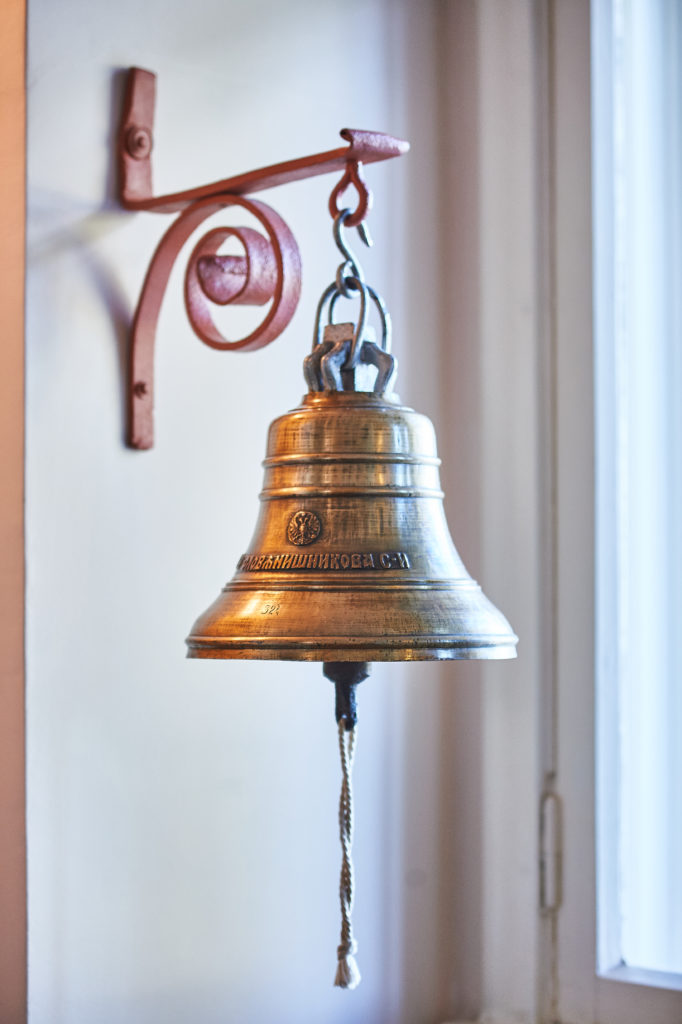
The station bell was rung on the passenger platform to signify the time to board a train and announce the departure of a train. It was also used as an alarm bell in cases of accidents or fire.
Since the opening of the first railway line in Estonia station bells were used. In independent Estonia the station bells were used only on narrow gauge Pärnu-Tallinn Railway until March 1923. After the WW2 station bells were reintroduced on Soviet Estonian railways, but only in stations without loudspeaker system. In Soviet era the cast iron station bells were rung only twice. The first ringing with one stroke announced the start of boarding a train. The second ringing with two strokes announced the departure of a train. If the train stopped less than 2 minutes, one stroke announced that a train was approaching the station and it was followed by two strokes when the train stopped.

A station bell is rung at the departure of all passenger, mixed and troop trains.
The first ringing – one stroke – warned that the time of train´s departure is drawing near:
- at the station of departure 20 minutes before the departure
- at the wayside station where trains stop over 2 minutes – at the moment train stops
- at the stations where train stops 2 minutes or less – in the moment train is approaching the station
The second ringing – two strokes – urges passengers to take their seats in cars:
- at the stations of departure and wayside stations where a train stops more than 2 minutes – 2 minutes before the departure
- at the stations where trains stop less than 2 minutes – when the train stops at the platform
The third ringing – three strokes – announces the immediate departure of a train.
From The Signal code of Russian North-Western Railways, 1916